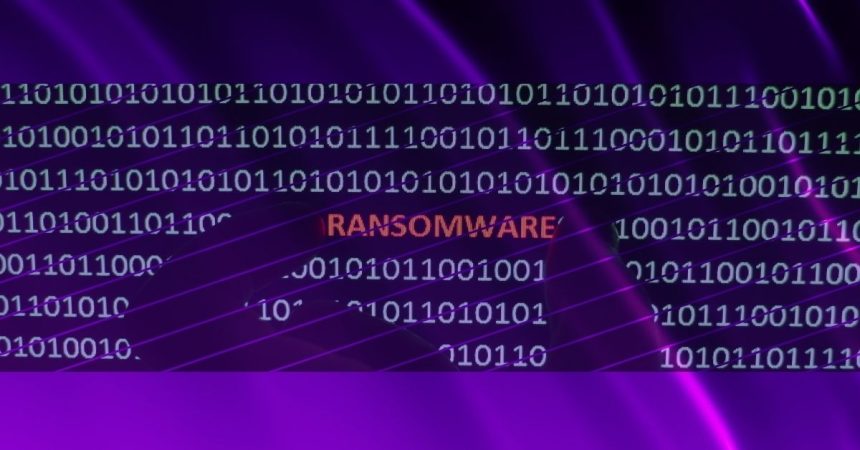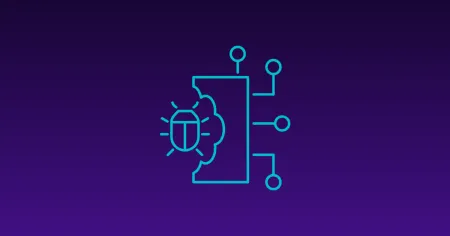Blog
Dec 15, 2023
Ransomware Revealed: From Attack Mechanics to Defense Strategies
Explore the evolution of ransomware attacks, their impact, types, and learn robust defense strategies against this escalating cyber threat.
8 min read

In the digital age, the threat of ransomware has become increasingly prevalent, posing a significant risk to individuals and organizations alike. Ransomware, a type of malware that encrypts a victim’s files and demands payment for their release, has evolved rapidly, causing substantial financial and reputational damage worldwide. This comprehensive guide aims to explore the intricacies of ransomware, its types, notable instances, and strategies for effective protection and response.
What is ransomware?
Ransomware is malicious software that encrypts files on a device, rendering them inaccessible, and demands a ransom for their decryption. It typically spreads through phishing emails or by exploiting vulnerabilities in software. Ransomware attacks are particularly dangerous as they leverage the critical need for data access, effectively paralyzing operations until a ransom is paid. Over the years, ransomware has become more sophisticated, with attackers targeting specific, often vulnerable, organizations for higher ransoms.
Evolution of ransomware
Ransomware’s evolution traces back to the late 1980s with the AIDS Trojan. Initially, these attacks were simplistic, using basic encryption to lock data. However, over the years, ransomware has evolved to become more complex and formidable. Advanced encryption algorithms have made unauthorized decryption nearly impossible, significantly increasing the threat level. The rise of cryptocurrencies like Bitcoin has further emboldened attackers by providing a means to receive untraceable payments, thereby increasing the anonymity and safety of the attackers.
The impact of ransomware
The impact of ransomware extends beyond just financial losses. It disrupts operations, damages reputations, and can lead to loss of sensitive or proprietary information. For businesses, a ransomware attack can result in significant downtime, leading to loss of business, customer trust, and long-term reputational damage. For individuals, such attacks can lead to loss of personal data, financial strain, and emotional distress.
Types of ransomware attacks
Understanding the various forms of ransomware is crucial in developing effective defense strategies. Here’s a detailed look at the most common types:
- Crypto ransomware: This type targets specific, high-value files on a system, encrypting them with sophisticated algorithms. The victim is usually able to use the computer but cannot access the encrypted files. Examples include CryptoLocker and TeslaCrypt.
- Locker ransomware: In contrast to Crypto Ransomware, Locker variants lock the victim out of their operating system, making it impossible to access any desktop files or applications. The computer essentially becomes unusable. Examples are the Winlocker and Reveton.
- Scareware: This pseudo-ransomware masquerades as legitimate security software or tech support, bombarding the user with false warnings and demands for money to fix non-existent issues. Scareware relies more on social engineering and less on actual software intrusion.
- Doxware (or Leakware): One of the more malicious types, Doxware threatens to publish sensitive, stolen data online if a ransom isn’t paid. This type of ransomware has an added layer of psychological pressure, as it preys on fears of public exposure and embarrassment. Examples include Jigsaw and Chimera.
- RaaS (Ransomware as a Service): A disturbing development in the ransomware landscape, RaaS involves developers creating ransomware software and then leasing it out to other attackers, often through a subscription-based model. This approach has made it easier for non-technical criminals to launch ransomware attacks. Notorious examples include GandCrab and REvil.
Advanced ransomware tactics
In addition to these types, attackers are constantly evolving their tactics. Double extortion ransomware, for instance, not only encrypts data but also steals it, threatening to release it publicly if the ransom isn’t paid. This tactic adds an extra layer of coercion and complexity to the attack.
Notable ransomware attacks
Ransomware has a notorious history with several high-profile attacks demonstrating its devastating potential:
- WannaCry (2017): Affecting over 200,000 computers in 150 countries, WannaCry exploited a vulnerability in Microsoft Windows. Notable victims included the UK’s National Health Service, Spain’s Telefonica, and FedEx. The attack caused an estimated damage of billions of dollars.
- NotPetya (2017): Starting as a targeted attack against Ukrainian institutions, it quickly spread globally. NotPetya masqueraded as ransomware but was more destructive, intended to cause widespread disruption rather than generate revenue.
- Bad Rabbit (2017): This attack spread through a disguised Adobe Flash installer, impacting organizations predominantly in Russia and Ukraine. It caused disruptions in various sectors, including transportation and media.
- Ryuk (2018): Distinguished by its targeted approach and high ransom demands, Ryuk disrupted operations in large, high-profile organizations. Its victims included government agencies, healthcare providers, and private companies.
- Sodinokibi/REvil (2019): Known for its aggressive tactics, including high ransom demands and data auctioning, REvil targeted a range of victims from small businesses to large enterprises. Its sophisticated approach made it one of the most feared ransomware threats.
Global impact and response
These attacks underscore the global reach and severe impact of ransomware. They have highlighted vulnerabilities in critical infrastructure and led to a heightened awareness of the importance of cybersecurity. Global initiatives, like the No More Ransom project, have been established in response, providing tools and resources to help victims recover their data without paying ransom.
How to protect against ransomware attacks
A robust approach to ransomware protection involves multiple layers of defense, combining technical solutions with organizational strategies:
Regular and secure data backups
The cornerstone of ransomware defense, regular and secure backups are crucial. These backups should encompass all critical data and be conducted frequently to ensure that the most recent data is available for recovery. It’s vital to store these backups in a location physically and logically separate from the primary network, such as an external hard drive, offsite storage, or a cloud-based service. This separation ensures that backups remain unaffected in the event of a network-wide ransomware attack. Testing these backups regularly is equally important to ensure they can be reliably restored in the event of data loss.
Comprehensive security software
Utilizing advanced antivirus and anti-malware solutions that offer ransomware-specific protections is a key defense strategy. These tools should be capable of real-time scanning to detect and quarantine ransomware as soon as it enters the system. Look for software that includes heuristic analysis, behavior monitoring, and machine learning capabilities to identify and block ransomware, even if it hasn’t been previously encountered. Regularly updating this software is critical to ensure it can protect against the latest ransomware variants.
Regular software updates and patch management
Cybercriminals often exploit vulnerabilities in outdated software to deploy ransomware. Thus, regularly updating and patching operating systems and all software is crucial. This includes not only mainstream software but also less obvious applications like plugins and add-ons. Automated update policies can be helpful in ensuring timely updates, and the use of patch management tools can aid in tracking and managing updates across an organization’s network.
Employee training and vigilance
Human error is a common entry point for ransomware. Training employees to recognize the signs of phishing emails, suspicious attachments, and dubious links is crucial. Regular, interactive training sessions, along with simulated phishing exercises, can heighten awareness and prepare staff to respond appropriately to potential threats. This training should be an ongoing process, reflecting the evolving nature of cyber threats.
Strong network security measures
Robust network security is fundamental in preventing the spread of ransomware. This includes the deployment of firewalls to monitor incoming and outgoing network traffic, and intrusion detection systems to identify suspicious activities. Network segmentation is also critical; by dividing the network into smaller, isolated segments, you can contain the spread of ransomware should it infiltrate one segment, thereby protecting the rest of the network.
Access control and privilege management
Implementing strict access control and privilege management policies can significantly reduce the impact of ransomware. By granting users only the access rights essential for their roles (the principle of least privilege), the potential spread and impact of ransomware can be minimized. Regularly reviewing and updating these access privileges is important to adapt to changing roles and responsibilities.
Incident response plan
A well-defined incident response plan is crucial for an effective response to a ransomware attack. This plan should outline the steps to isolate infected systems, identify the ransomware variant, contain the breach, and notify relevant stakeholders. Regular drills and reviews of the incident response plan ensure that the team is prepared to act quickly and efficiently in the event of an attack.
Disaster recovery planning
A comprehensive disaster recovery plan is essential for restoring operations after a ransomware attack. This plan should detail the procedures for data recovery, restoring critical functions, and maintaining business continuity. It should also include contact information for key personnel and external partners, such as cybersecurity firms and law enforcement agencies.
Email filtering and internet security
Email is a common vector for ransomware delivery, making robust email filtering systems vital. These systems should be capable of detecting and blocking phishing emails, malicious attachments, and suspicious links. Similarly, internet security solutions, including secure web gateways and browser isolation technologies, can help prevent access to malicious websites known to distribute ransomware.
Regular security audits
Conducting regular security audits helps organizations identify and address potential vulnerabilities that could be exploited by ransomware attackers. These audits should assess the effectiveness of current security measures, identify weaknesses, and recommend improvements. This could include penetration testing, vulnerability assessments, and reviewing access controls.
Cyber insurance
While cyber insurance does not prevent ransomware attacks, it can be an essential part of the recovery process. It can provide financial support to cover the costs associated with a ransomware attack, such as data recovery, legal fees, and business interruption losses. It’s important to understand the specifics of what your policy covers in the context of ransomware.
Conclusion
Just as social engineering attacks and APTs, ransomware represents a significant and evolving digital threat with the potential to cause extensive harm to both individuals and organizations. A deep understanding of its nature, continuous awareness of its evolution, and the implementation of a robust, multi-layered defense strategy are essential for maintaining security and resilience in the digital age. As ransomware tactics continue to evolve, so too must our strategies and tools to combat these sophisticated cyber threats, ensuring the safety and integrity of our digital world.
Stay in the know: Become an OffSec Insider
Get the latest updates about resources, events & promotions from OffSec!
Latest from OffSec

Research & Tutorials
CVE-2024-13059: Exploiting Path Traversal in AnythingLLM for Remote Code Execution
Discover CVE-2024-13059, a critical vulnerability flat that affects AnythingLLM’s handling of ASCII filenames in the multer library.
Apr 17, 2025
2 min read

Enterprise Security
How OSCP Holders Can Lead Their Teams to Greater Cybersecurity Resilience
Champion OSCP training in your organization to build a unified, resilient security team.
Apr 11, 2025
6 min read

Research & Tutorials
CVE-2024-57727: Path Traversal Vulnerability in SimpleHelp Web Application
CVE-2024-57727 lets attackers read sensitive files via path traversal in SimpleHelp. Learn more about how attackers exploit this flaw.
Apr 10, 2025
3 min read